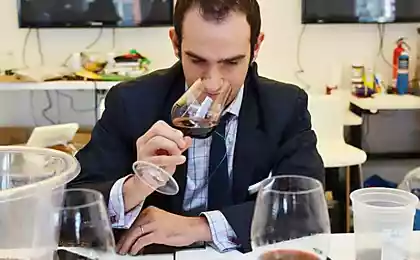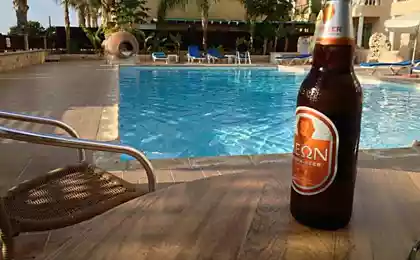
Once the do not call wine: rich, beautiful, mysterious, divine. It is able to make any warmer and lighter cold autumn evening. Portuguese poet Fernando Pessoa famously said: "Life is good and the wine better." But all this is only about the present, the natural wine "without chemicals" and unnecessary additives.
Website offers to remember the basic rules for choosing wine. To establish the authenticity of the drink will help and a couple of simple experiments.
Bottle h3> Usually the wine is bottled in bottles of 0, 75 l. Note: the bottom of a wine bottle should be concave! Do not buy the wine if it is bottled with a flat bottom. Rather, it is a fake.
By the way, the color of the bottle, too, speaks volumes. According to experts and technologists, wine bottle should be in color, so that the light does not affect the quality of the beverage.
Tube h3> Many believe that a bottle of this wine definitely sealed cork. In fact it's not. Naturally, the cork cork drink says about status. However, a number of decent wine list kapron cork or plastic stoppers. Stocks of Portuguese cork, too, are not infinite, and therefore more expensive cork every day. Now, for example, one tube costs a dollar!
If the tube is, compare it to the name of the wine and the manufacturer. On the tube can present the batch number. If no data on it is not likely to spill wine is not a factory, but a fake.
Tetrapak h3> The wine in packages majority considers unreal. But this is not always true. Indeed, the majority of Tetra Pak cartons in stores outright contains swipes that name even bad wine language does not turn. However, there are plenty of decent quality of Chilean wines, poured it in Tetra paks.
The precipitate h3> As a rule, even in good physical fault on the bottom, you can find a little bit of sediment. In aged wines settles tartar. But if a lot of sediment and flake it - do not take the wine. It is impure. The consistency of sludge is easy to check if you just turn the bottle. If the deposit does not fall - bad wine.
Label h3> Of course, it is possible to leave a lot of things, but most people read something and just do not bother. And if you would read, perhaps, you would not buy wine from the wine produced, say, in the Crimea, but spilled somewhere in Poltava.
By the way, the label will help to identify and present vintage wines with a long exposure. After all, if the bottle for many years, its label will also look old and not shiny fresh graphic arts industry. If the labels with spelling mistakes - be sure the wine was poured into the nearest garage or in the back room of the shop where it stands.
Color h3> It is believed that the natural wine does not leave traces of blue tongue. In fact it is not so. Wine leaves traces. So check the quality and authenticity of the drink so it will not turn.
Test glycerol h3> There is a simple experiment, by which you determine the authenticity of wine at home. Enough to drip a drop of glycerol in wine. If glycerol remains colorless, you have purchased a real wine. If the droplet acquires a reddish or yellowish tint - the wine mass colorants and additives. Glycerin is worth a penny, and you can buy it at a pharmacy.
Test vial h3> The wine does not mix with water. Check before you now whether wine can be as follows: Pour into a small vial a little wine in a bowl, pour the water. Pinch the bottom of a vial of wine and dip your finger in a bowl upside down. Then release your finger - if the wine does not follow from the vial and the water is clear, then bottle the wine in the bottle and in the present.
via www.pinterest.com/
























